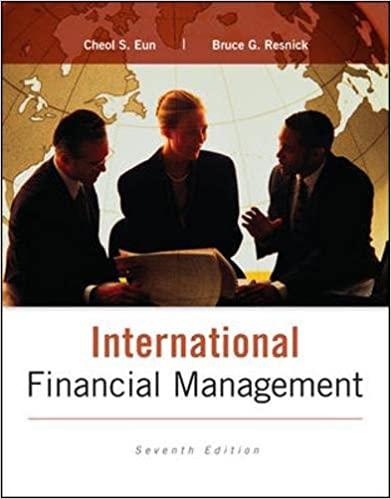Answered step by step
Verified Expert Solution
Question
1 Approved Answer
How do you draw graphs to obtain the Total Surplus? I am confused as to where the values came from. 1. Consider two markets, the

How do you draw graphs to obtain the Total Surplus? I am confused as to where the values came from.
1. Consider two markets, the La La Land (L) and the Gotham City (G), with the following market demand and supply schedules: Market Demand Supply La La Land Q1 = 120 PL QL = P, Gotham City QG = 110 - 0.5PG QG = 0.5PG (a) Suppose the two markets can trade if an opportunity presents itself. Ob- tain the equilibrium prices, quantities, and total surplus in each of the two markets, if there were a transfer cost of 20. Recall that in absence of a transfer cost: QES = P-(120 P) = 2P - 120 P=60+0.5Q QED = 110 0.5P - (0.5P) = 110-P P=110 - Q That is, when a transfer cost (T) is zero, the import price (Pl) is equal to the export price (PE). With non-zero transfer costs, pl = PE+T; in our case, pl = p + 20. We can rewrite the excess supply and excess demand functions with respective prices, and then substitute in either the export price or the import price in terms of the other price and the transfer cost): p = 60+ 0.5Q pl= (PE+20) = 110 - Q Re-arrange the terms, equate two prices to each other, and solve for Q to obtain: Q = 20; pE = 70; pl = 90. Total surplus in the exporting market (La La Land): T5 = [70 x 70 + (120 70) 50] = 3700 Total surplus in the importing market (Gotham City): TS' = 90 x 45+ (220 - 90) * 65] = 6250 1. Consider two markets, the La La Land (L) and the Gotham City (G), with the following market demand and supply schedules: Market Demand Supply La La Land Q1 = 120 PL QL = P, Gotham City QG = 110 - 0.5PG QG = 0.5PG (a) Suppose the two markets can trade if an opportunity presents itself. Ob- tain the equilibrium prices, quantities, and total surplus in each of the two markets, if there were a transfer cost of 20. Recall that in absence of a transfer cost: QES = P-(120 P) = 2P - 120 P=60+0.5Q QED = 110 0.5P - (0.5P) = 110-P P=110 - Q That is, when a transfer cost (T) is zero, the import price (Pl) is equal to the export price (PE). With non-zero transfer costs, pl = PE+T; in our case, pl = p + 20. We can rewrite the excess supply and excess demand functions with respective prices, and then substitute in either the export price or the import price in terms of the other price and the transfer cost): p = 60+ 0.5Q pl= (PE+20) = 110 - Q Re-arrange the terms, equate two prices to each other, and solve for Q to obtain: Q = 20; pE = 70; pl = 90. Total surplus in the exporting market (La La Land): T5 = [70 x 70 + (120 70) 50] = 3700 Total surplus in the importing market (Gotham City): TS' = 90 x 45+ (220 - 90) * 65] = 6250Step by Step Solution
There are 3 Steps involved in it
Step: 1

Get Instant Access to Expert-Tailored Solutions
See step-by-step solutions with expert insights and AI powered tools for academic success
Step: 2

Step: 3

Ace Your Homework with AI
Get the answers you need in no time with our AI-driven, step-by-step assistance
Get Started


